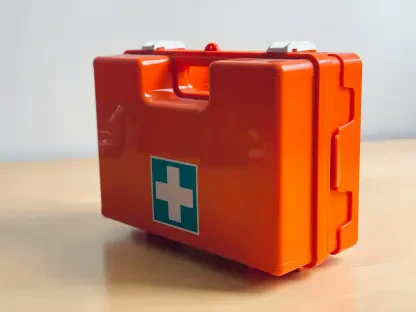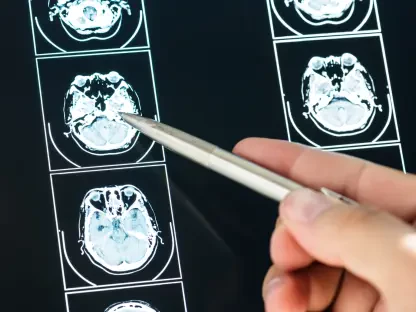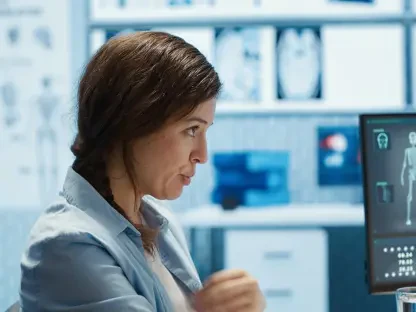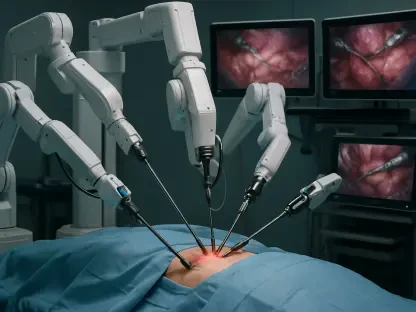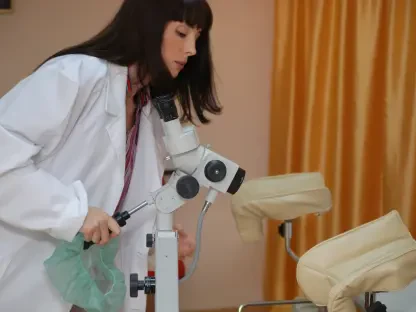In the rapidly shifting landscape of medical imaging, RadNet Inc., listed on NASDAQ under the ticker RDNT, has captured the spotlight with a blend of financial prowess and cutting-edge advancements that few can rival. This company has not only posted remarkable second-quarter (Q2) results but has also set a new benchmark for innovation in a sector hungry for solutions to persistent challenges. With a stock rally that has turned heads on Wall Street and technologies poised to transform healthcare delivery, RadNet stands as a beacon of progress. The excitement surrounding its recent achievements signals a broader shift in how medical imaging can address both operational and economic hurdles. As industry watchers and investors alike take note, the story unfolding is one of resilience, strategic vision, and a clear intent to lead rather than follow.
Financial Triumphs and Market Impact
Q2 Performance Breakdown
RadNet’s Q2 financial results have painted a vivid picture of a company firing on all cylinders, exceeding expectations with an adjusted earnings per share (EPS) of 31 cents, nearly doubling the analyst consensus of 16 cents. Total revenues for the quarter soared to $498.23 million, marking an 8.4% rise compared to the prior year. This growth was propelled by an extraordinary 30.9% surge in the Digital Health segment, which complemented the steady performance of the Imaging Centers division. Such figures underscore RadNet’s knack for navigating a competitive and often turbulent market. Beyond mere numbers, these results reflect a deep operational strength, showcasing the company’s ability to capitalize on emerging opportunities while maintaining a firm grip on core business areas. This financial milestone has not only solidified RadNet’s standing but also set a high bar for peers in the industry.
The significance of RadNet’s Q2 performance extends beyond immediate gains, offering a window into the company’s strategic adaptability in a sector facing rising costs and resource constraints. The robust growth in Digital Health highlights a deliberate pivot toward high-potential areas that promise scalability and efficiency. Meanwhile, the consistent revenue from Imaging Centers demonstrates a balanced approach, ensuring stability while exploring innovative frontiers. This dual success is a testament to meticulous planning and execution, allowing RadNet to outperform market predictions with ease. For stakeholders, this signals a reliable foundation upon which future growth can be built, especially as healthcare demands continue to evolve. It’s a clear indication that RadNet isn’t just reacting to industry trends but actively shaping them through calculated financial maneuvers.
Investor Confidence and Stock Surge
The market’s response to RadNet’s Q2 earnings has been nothing short of electric, with the company’s stock price jumping over 18% in the wake of the announcement, followed by an additional 8.16% uptick on a notable trading day in August. This surge reflects a tidal wave of investor confidence, driven by the belief that RadNet is on a sustainable upward trajectory. Analysts have echoed this sentiment, with firms like B. Riley raising their price target to $71 while maintaining a strong ‘Buy’ rating. Such endorsements aren’t mere speculation; they’re grounded in the tangible results RadNet has delivered and the promise of continued momentum. For investors, this rally isn’t just a momentary spike but a signal of deeper trust in the company’s ability to deliver value over the long haul.
Further bolstering this optimism is RadNet’s own upward revision of its full-year revenue forecast, a move that speaks volumes about internal confidence in both the imaging center and digital health segments. This forecast adjustment isn’t just a number—it’s a statement of intent, suggesting that the company anticipates sustained growth even amidst broader economic uncertainties. The market’s enthusiastic reception, paired with analyst backing, paints RadNet as a standout opportunity in a volatile landscape. Investors are increasingly viewing the company as a rare blend of stability and potential, particularly in an industry where innovation often comes with high risk. This growing faith is likely to fuel further interest, positioning RadNet as a key player to watch in the financial arena of medical technology.
Technological Innovation as a Game-Changer
Unveiling TechLive™
At the forefront of RadNet’s transformative journey is the FDA clearance of TechLive™, a pioneering technology developed by its subsidiary DeepHealth, which promises to redefine operational efficiency in medical imaging. This innovative tool enables centralized control over imaging processes, directly addressing critical pain points such as labor shortages and escalating costs that have long plagued the sector. By streamlining workflows and reducing dependency on on-site resources, TechLive™ positions RadNet as a leader in solving systemic challenges that hinder many healthcare providers. The clearance of this technology isn’t just a regulatory win; it’s a bold step toward reshaping how imaging services are delivered, offering a glimpse into a future where efficiency and accessibility go hand in hand. This development has sparked significant interest among industry observers who see it as a potential game-changer.
The implications of TechLive™ extend far beyond immediate operational benefits, signaling RadNet’s commitment to staying ahead of the technological curve in a field where innovation can make or break a company. Unlike incremental upgrades, this technology tackles foundational issues, providing a scalable solution that could redefine industry standards. For healthcare facilities struggling with staffing deficits and budget constraints, TechLive™ offers a lifeline, potentially reducing overhead while maintaining high-quality service delivery. RadNet’s foresight in developing and securing approval for such a tool highlights a proactive approach that contrasts with the reactive strategies of many competitors. As this technology rolls out, its impact on both RadNet’s market share and the broader sector will likely become a focal point for analysis, underscoring the company’s role as an innovator with tangible solutions.
Strategic Positioning for Industry Challenges
RadNet’s embrace of technology like TechLive™ is a cornerstone of its broader strategy to navigate and overcome pervasive industry hurdles, from inflation to technology supply constraints. By leveraging such advancements, the company addresses not only internal efficiencies but also external pressures that affect the entire healthcare ecosystem. This strategic positioning goes beyond mere adaptation; it’s about anticipating challenges and crafting solutions that offer a competitive edge. RadNet’s focus on digital health innovations alongside traditional imaging services creates a diversified portfolio that mitigates risk while maximizing growth potential. This approach has resonated strongly with stakeholders who value resilience in an unpredictable market, cementing RadNet’s reputation as a forward-thinking entity.
Moreover, this strategic vision enhances RadNet’s appeal to a wide array of partners and investors who see value in a company that doesn’t shy away from complex problems. By prioritizing technological answers to labor and cost issues, RadNet sets itself apart as a problem-solver in a sector often bogged down by inefficiencies. This isn’t just about survival—it’s about thriving under pressure through calculated risks and investments in future-proof solutions. The company’s ability to balance immediate operational needs with long-term innovation goals suggests a maturity that few rivals can match. As industry challenges persist, RadNet’s proactive stance is likely to attract further attention, positioning it as a model for how medical imaging firms can turn obstacles into opportunities for leadership and growth.
Broader Implications and Future Potential
Redefining Industry Standards
RadNet’s unique combination of financial success and technological innovation aligns seamlessly with overarching trends in the medical imaging sector, where adaptability and efficiency often determine a company’s fate. The company’s ability to exceed quarterly forecasts while rolling out solutions like TechLive™ suggests a potential to set new benchmarks for operational excellence. This dual focus isn’t merely a competitive advantage; it’s a blueprint for how the industry could evolve to meet modern demands. As healthcare providers grapple with rising expectations for both quality and cost-effectiveness, RadNet’s approach offers a viable path forward. The ripple effects of such advancements could push competitors to innovate similarly, raising the bar across the board and ultimately benefiting patients through improved services.
This potential to redefine standards also places RadNet at the center of a broader industry transformation, where technology becomes a critical differentiator in an increasingly crowded field. The emphasis on centralized imaging processes through tools like TechLive™ hints at a future where scalability and precision dominate service delivery models. For policymakers and industry leaders, RadNet’s progress serves as a case study in balancing profitability with meaningful innovation. The company’s trajectory suggests that financial health and technological leadership are not mutually exclusive but can be mutually reinforcing. As this narrative unfolds, RadNet may well become a catalyst for systemic change, encouraging a shift toward more integrated and efficient practices that prioritize both economic and clinical outcomes in medical imaging.
Market Insights and Long-Term Opportunities
Insights from trading experts, such as Tim Bohen of StocksToTrade, add a compelling dimension to RadNet’s story, emphasizing the importance of patience and pattern recognition in capitalizing on market movements. Bohen’s perspective—that missed opportunities are inevitable but new setups always emerge—mirrors the enthusiasm surrounding RadNet’s current surge while pointing to its long-term appeal for investors. This viewpoint underscores that while the immediate stock rally is significant, the company’s sustained potential lies in its ability to consistently innovate and grow. For those looking to invest in emerging trends, RadNet represents a dynamic opportunity, blending the stability of strong financials with the excitement of cutting-edge technology in a high-demand sector.
From a broader healthcare perspective, RadNet’s advancements carry profound implications for how imaging practices might evolve, potentially leading to more streamlined and cost-effective systems industry-wide. For investors, the company offers a rare mix of immediate returns and future growth prospects, making it a standout in a volatile market. This dual allure is likely to draw continued interest from both seasoned traders and newcomers seeking exposure to transformative healthcare solutions. As RadNet builds on its current momentum, its role as a pacesetter becomes clearer, offering lessons in resilience and foresight. Looking ahead, the steps taken to integrate financial discipline with technological breakthroughs stand as a testament to strategic clarity, paving the way for stakeholders to anticipate further milestones in the journey ahead.


